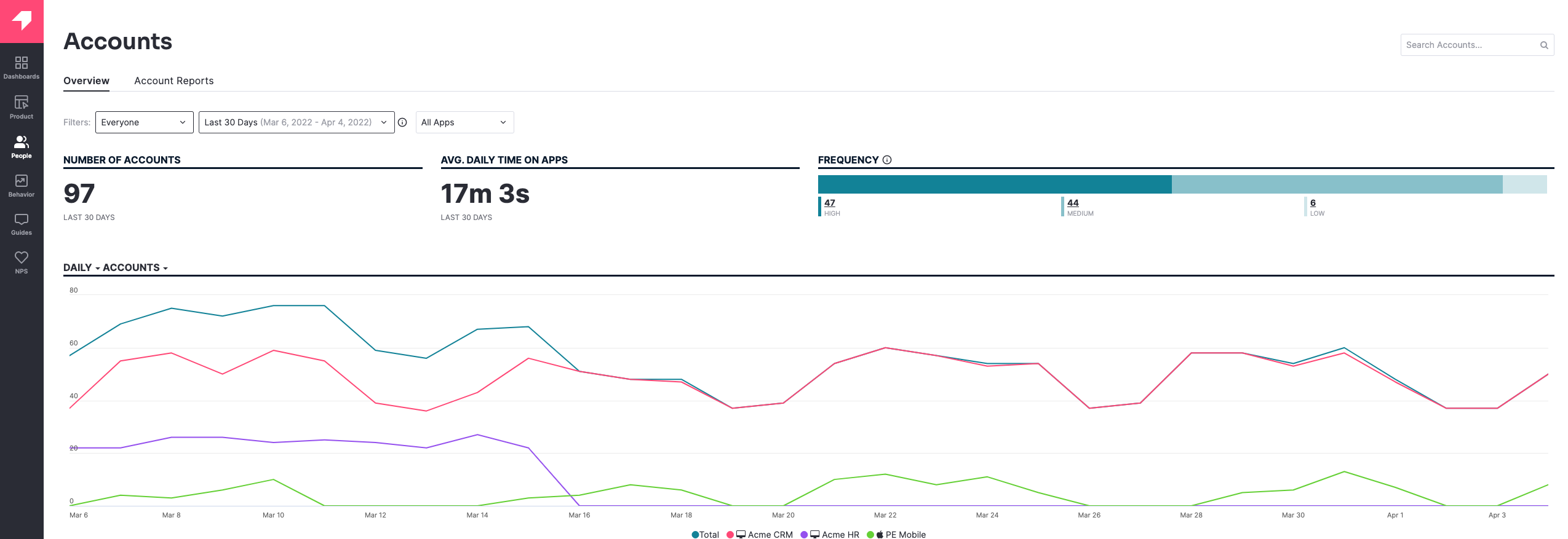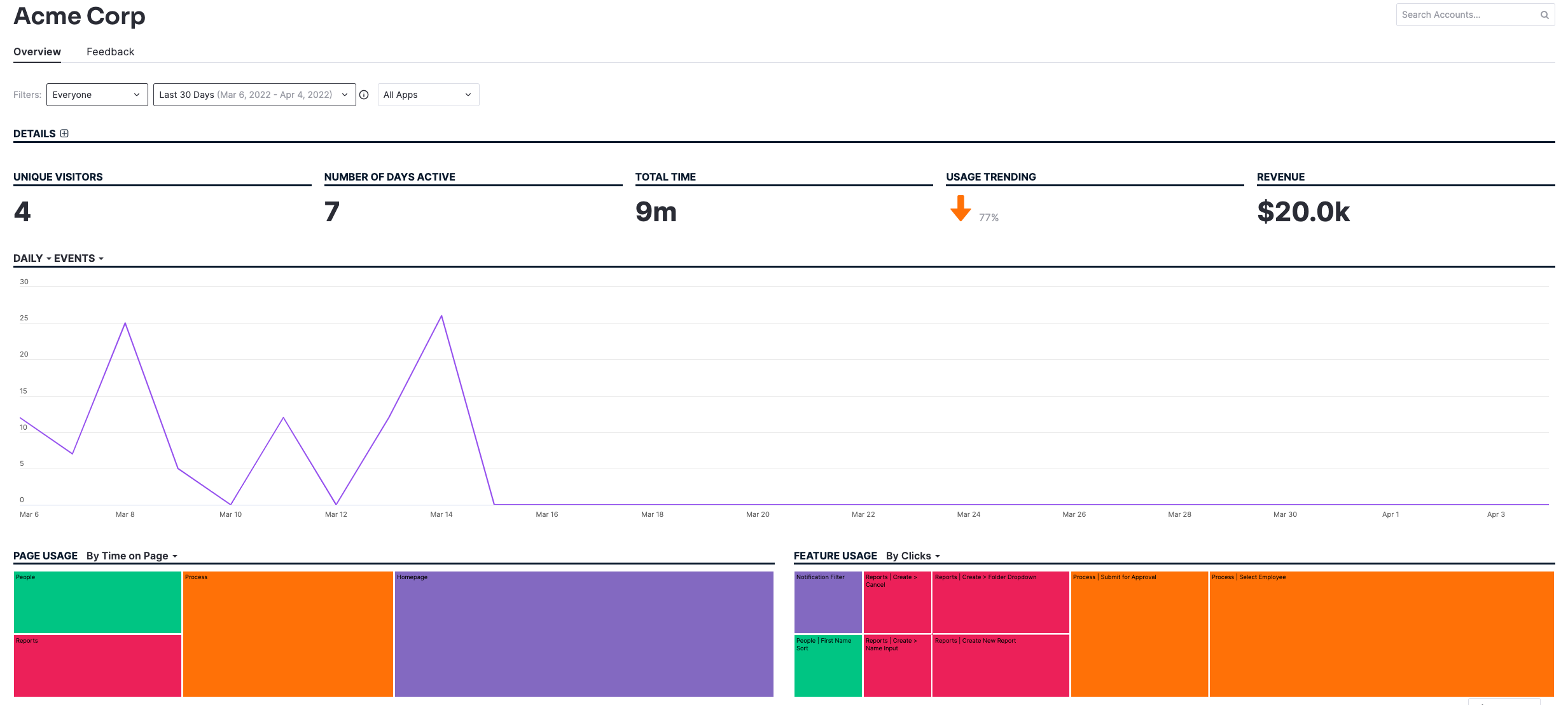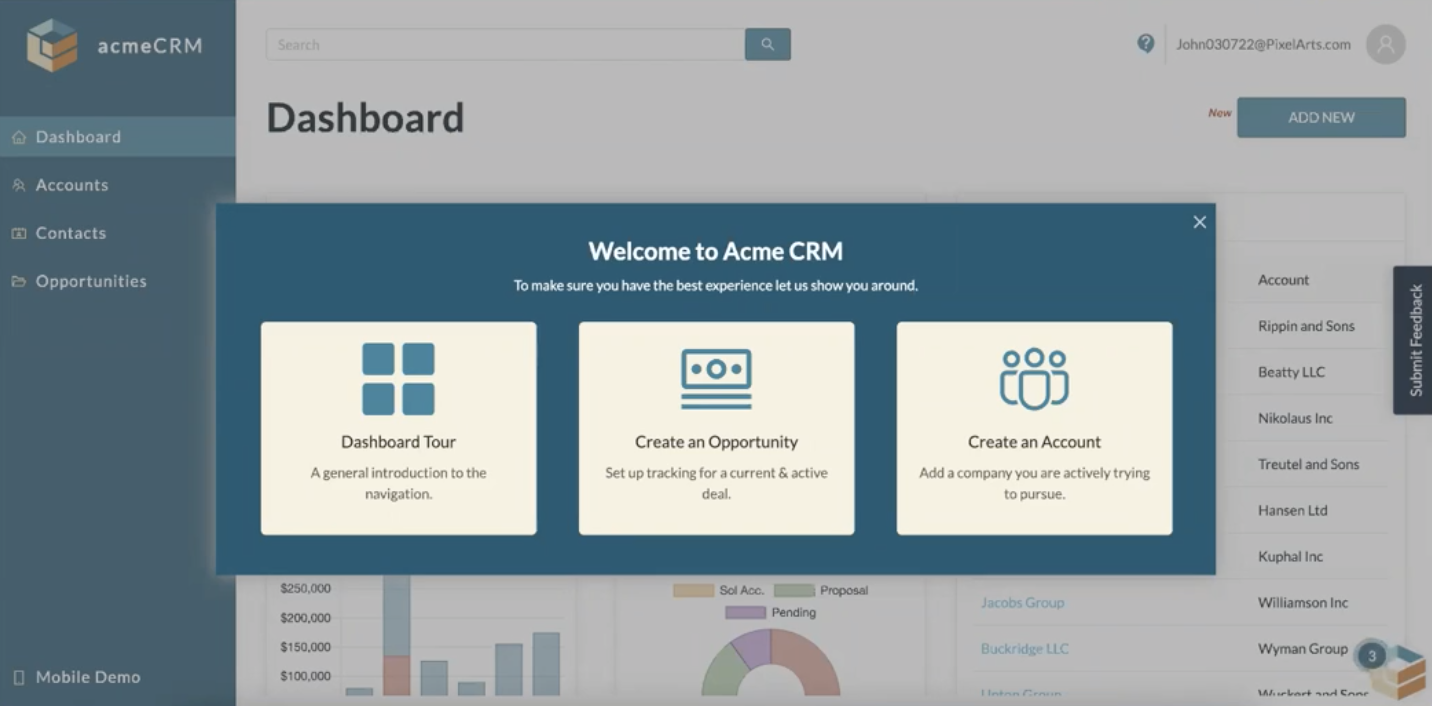How customer success teams can use product insights to delight their users
The best customer relationships are built on a foundation of trust and empathy. But they should also be managed and tended to using data.
The world’s most effective customer success (CS) teams operate at the intersection of interpersonal expertise and data proficiency. They look to data to understand exactly how their customers are using the product (product analytics) as well as what they think of it (customer feedback). They even use the product as a vehicle through which to engage and inject moments of delight into the customer journey (in other words, they leverage product-led strategies).
Beth Greenberg (Senior Manager, Customer Success at Pendo) and Hannah Chaplin (Principal, Product Marketing at Pendo) recently sat down to discuss why uniting CS and product teams around data can help improve the product experience, and shared how customer success managers (CSMs) can use Pendo to inspire and delight their customers throughout the lifecycle.
Read on for the recap, or scroll to the bottom of the page to watch the full recording of their conversation.
The role of data in customer delight
To drive the best customer experiences, CSMs need to rely on more than gut-feel and intuition alone. They need data to inform their decisions, create more predictable and scalable motions, and shape their engagement strategies.
Without usage data, CSMs have no way of understanding their customers’ behaviors or sentiment outside of relying on anecdotal commentary. But this strategy is neither reliable nor reflective of how customers are actually using the product (vs. how they say they’re using the product). Without product analytics, CSMs have no line of sight into where their customers are getting stuck or seem to be in need of additional support. This lack of data also inhibits CSMs from spotting early warning signs of customer churn—like low adoption, decreasing active use, or poor feature engagement.
Data is the common language that helps bridge the gap between the CS and product teams. It creates a single source of truth that unites CSMs and product managers (PMs)—so they can work together to build the best experience possible. When both teams collaborate around data, they can better personalize the customer journey, iterate and innovate more seamlessly, and speed their customers’ paths to value. Ultimately leading to:
- Smoother and more scalable onboarding
- Increased product and feature adoption
- Improved customer retention
How to get started with product data
Product analytics and usage data helps teams across the organization formulate a rich and robust understanding of the customer experience. It also helps them continually improve the product by revealing actionable insights about what’s working well, what could use improvement, and where intervening to deliver more hands-on attention could be most helpful.
There are four areas in particular where CS teams can start to easily incorporate data into how they work with customers:
- Product usage
Product usage data, also known as product analytics , helps CSMs understand exactly how customers are using and moving through the product. It exposes usage patterns and trends, tracks specific events or behaviors deemed important to the organization, and provides insight into areas of the product that aren’t functioning as well (or as easily) as they could be. - Customer feedback
Customer feedback reveals what customers think and feel about their experience. It’s considered qualitative data, and is incredibly valuable for adding context to product usage data so that CSMs and PMs have the full picture of the customer experience. CS teams are particularly well-suited to collect and act on customer feedback because of their close proximity to customers and users—and should therefore partner closely with the product team on the organization’s feedback and voice of the customer (VoC) programs. - In-app onboarding
Understanding how customers’ onboarding experiences are going is critical for helping customers get to value fast. With in-app onboarding (and the data that can be tracked through it), CSMs can get a clear understanding of their customers’ early perceptions of the brand, personalize future enablement programs, and tailor how they work with each customer in their portfolio based on their onboarding activities. - Net Promoter Score (NPS)
NPS is an industry standard benchmark that helps organizations understand how their customers are feeling about their experience, and how likely they are to recommend the company or product to their peers. Using NPS product data can help CSMs identify their strongest advocates and promoters (so they can be leveraged for reviews or recommendations), as well as detractors (so CSMs can intervene to mitigate churn).
We’ll dive into these areas in more detail—and share tactics for how CS teams can use product data to enhance the customer experience at each step—in the following sections.
How to use Pendo to track product usage
Pendo’s retroactive data capture is particularly useful for CS teams. As Beth explained, CSMs don’t just care about what customers are doing in the product today. They also care about what their customers have been doing for the last 30, 60, or 90 days—or even the last year. This historical context helps CSMs understand where their customers have been so they can adjust their success plans to help them get where they want to go. This information also helps CSMs discern which customers are healthy vs. at-risk, plus which are likely to renew or could be potential candidates for expansion.
Within the “People” section of Pendo Analytics, you’ll see three categories: visitors, accounts, and segments.
- Visitors are your customers’ individual end users
- Accounts are your customers
- Segments are how you slice and dice the data in Pendo, depending on what you’re trying to learn
The Accounts view in particular is a great way for CS leaders to get a holistic view of how all of their reports’ customers are doing. This view displays the number of accounts in each CSM’s portfolio, the average amount of time those customers spend inside the product, and how active each user is.

Beth also noted the Account List area as a great resource for CSMs. This module allows CSMs to see exactly what their customers are doing and how active (or inactive) they are. This view can also be saved as a report, so CSMs can use their unique view to monitor their customers’ behaviors or share findings with their managers as needed.
Pendo has a number of integrations that are useful for CS teams. For example, the Salesforce integration pulls customer account data directly into Pendo (including the plan or subscription they’re on, the number of support tickets they’ve submitted, and their renewal date), so CSMs can easily view it alongside their customers’ usage. Using this data, CSMs can find out answers to questions like:
- Are my customers leveraging everything available to them within their plan?
- Are they getting enough usage from their entitlements?
- Are they adopting the right features to achieve their goals?
Beth also pointed out that the Page Usage and Feature Usage tree charts in Pendo are valuable jumping-off points for customer conversations.
- Page Usage helps CSMs identify which specific pages users are visiting within the product
- Feature Usage shows exactly which features within the product are getting clicked on or used the most

This information helps CSMs have strategic discussions with customers about what their users are actually doing, identify customers who may be at-risk due to poor adoption and utilization, and see whether there are particular features the customer has access to but isn’t yet making use of. If the customer is doing everything right and using all the features available to them in their subscription tier, they can serve as an example of an ideal customer profile that the CSM can then replicate across their entire portfolio.
How to use Pendo to scale and drive customer onboarding
As organizations (and the number of customers they serve) grow, it becomes impossible for CSMs to give every single customer in their portfolio the same 1:1 attention they did when the company was small. This is where a scalable 1:many strategy comes into play.
Onboarding guides are a great place for CS teams to start thinking about scaling their programs and helping customers get to value as quickly as possible. The Resource Center is a great, always-available place to house onboarding guides and other support or enablement materials. CSMs can target these guides to the specific personas or user types they’re trying to onboard, so they feel tailored and relevant (and are thus more likely to drive long-term adoption).
Leveraging onboarding guides can be a huge time-saver for CS teams, too. They help explain the key processes or features within the product that are most important to get customers up and running quickly (e.g. creating an account). Without these automated resources, customers inevitably ask their CSMs how to do these basic tasks—pulling the CSM away from the more strategic, high-value work they should be focused on.
CSMs can also deploy lightbox-style guides to welcome new users and set them on the right onboarding path based on the job they’re trying to get done. This ultimately reduces the amount of time CSMs need to spend on calls with customers, lets customers know that they’re being heard and catered to, and ensures the materials customers consume are as relevant to them as possible.

Finally, CS leaders can also use in-app guides to introduce new customers to their CSMs. By passing information from Salesforce into Pendo (in this case, the assigned CSM’s name and contact information) and populating it in a targeted guide, the CS team can deliver a delightful and personalized experience without needing to manually send hundreds of emails—or sit in on hundreds of calls—with each new customer in their portfolio.
How to use Pendo to collect and act on customer feedback and NPS
Feedback is a huge area of opportunity for CS teams to drive and improve customer outcomes. Because they are more attuned to their customers’ needs than anyone else—and because they interface directly with customers on a daily basis—CSMs are uniquely positioned to encourage customers to submit feedback about their experiences, or can submit feedback to the product team on customers’ behalf.
The Feedback tab within the Accounts section of Pendo is a great way to see how many requests have been submitted by users within a given account. Here, CSMs can also see the status of each request (so they can have more direct and transparent conversations with customers about what is or isn’t being worked on), as well as how each user within the account has prioritized each request. All of this information is incredibly useful for CSMs to know before meeting with customers, helps CSMs better advocate for their customers internally, and empowers them to shape the future direction of the product.
Net Promoter Score (NPS) is also an incredibly powerful data point for CS teams—particularly when it’s viewed alongside product usage data. NPS gives CSMs a quantifiable measure of overall customer sentiment that is invaluable in portfolio reviews, quarterly business reviews (QBRs), and other internal and external check-ins. Pendo allows you to view NPS by account or customers—which can help CS leaders understand how many Detractors, Passives, or Promoters CSMs have across their entire book of business (and dig into the usage data to find out why). For example:
- High usage Promoters would likely make great brand advocates and champions. Could their CSMs reach out to them and ask for testimonials or customer stories?
- Low usage Detractors should be marked as at-risk. Are they struggling to use a particular, high-value feature within the product correctly? Do they have a lot of unresolved support tickets or unacknowledged feature requests in the queue?
To learn more about how CS teams can leverage Pendo’s product insights to delight their users and drive an incredible customer experience, watch the full recording of Hannah and Beth’s discussion below—and be sure to register for our next CS-focused webinar, Driving product-led transformation: The evolution of product-led customer success.


